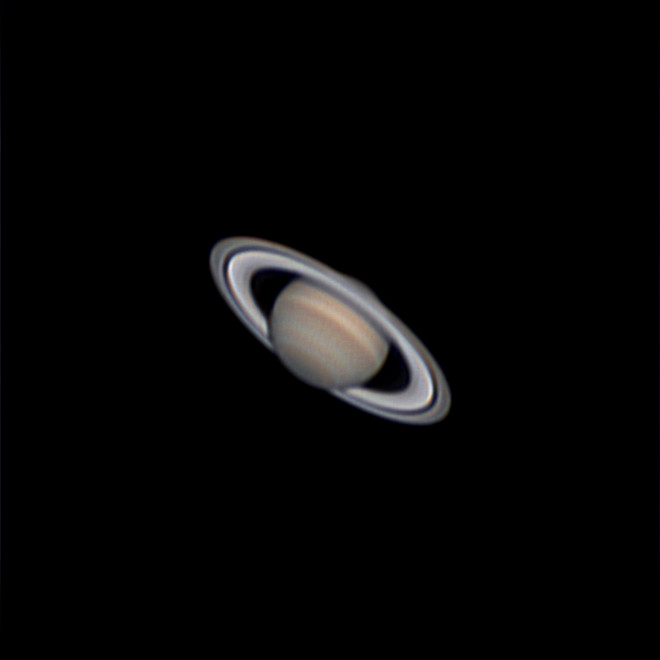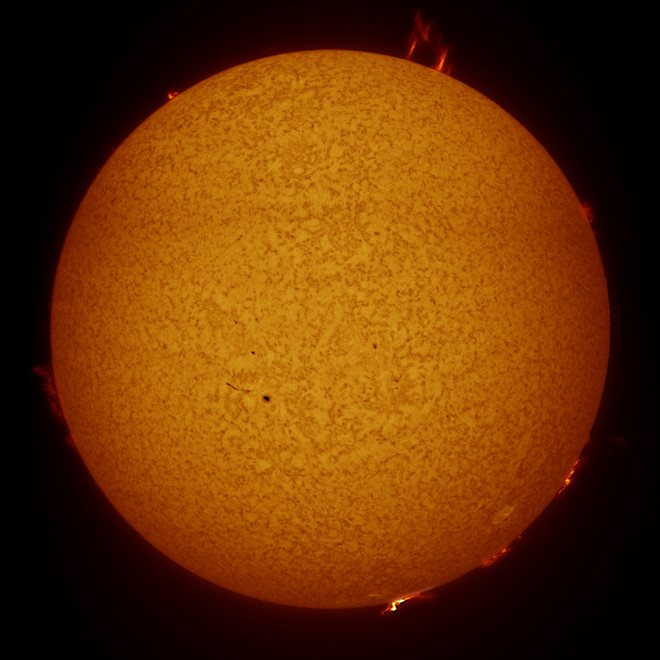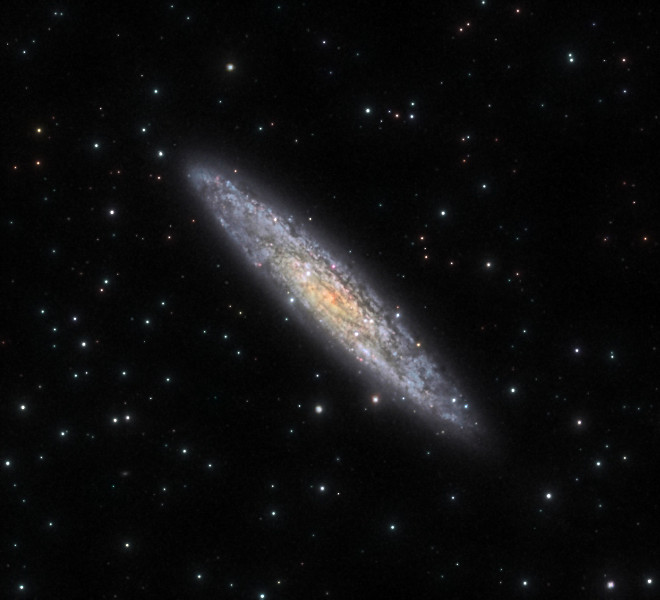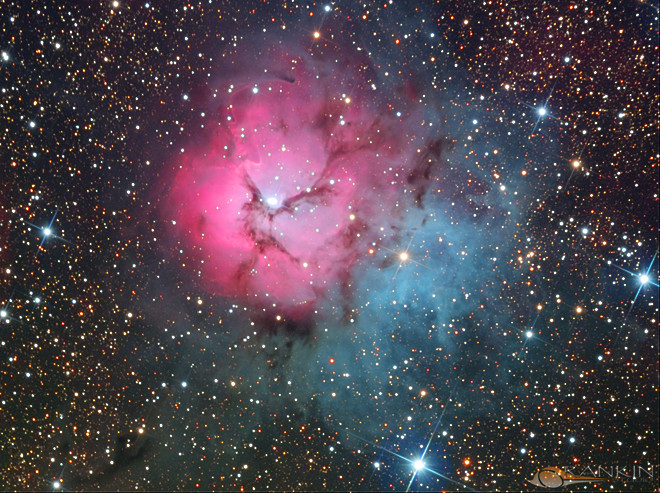
Mark your calendars and plan star parties with your family, friends, and fellow astronomy enthusiasts to catch these noteworthy 2015 celestial events. Here are just a few of the exciting sights to look forward to in the New Year!
January:
Bundle up and keep your eyes peeled on the evenings of January 3rd and 4th to catch the Quadrantids meteor shower. While the nearly Full Moon will unfortunately outshine many of the Quadrantids this year, there will still be opportunities to see brighter meteors streak across the night sky. Look for meteors appearing to radiate from the constellation Bo÷tes.
On the night of January 23rd, train your telescope on Jupiter from 7pm PST to about half-past 11pm PST to witness a rare triple Galilean moon and shadow transit. The shadows of Galilean moons Callisto, Io and Europa will cross the face of Jupiter, followed by the moons themselves, all in one night!
February:
Get ready for great views of giant Jupiter this month as the gas giant planet will be at opposition on the evening of February 6th - the point in its orbit when it appears opposite the Sun from Earth. The second month of 2015 continues to offer good views of the winter Milky Way, especially during the evening of February 18th, when the New Moon promises dark skies.
Catch an early evening conjunction of the planets Venus and Mars on February 22, when our closest neighboring planets will appear to be just a half-degree apart in the evening sky.
March:
Some of the best galaxies to see are spread across the night skies of March from Ursa Major to Virgo. Take advantage of the New Moon on March 20th and set sail for these island universes with a big telescope! Grab a pair of 50mm or larger binoculars in March for great views of the Pleiades cluster (M45), the Beehive cluster (M44), and the must-see Double Cluster in Perseus. These sparkling sky gems are perfect fare for big astronomy binoculars and telescopes too.
April:
Skygazers get a treat this month in the form of a Total Lunar Eclipse on the evening of April 4th. You won't want to miss the show as the Full Moon gradually becomes darkened by the Earth's shadow and turn a reddish orange color. This Total Lunar Eclipse will be visible throughout most of North and South America, eastern Asia and Australia.
Don't miss the Lyrids meteor shower which peaks during April 22nd and 23rd. Scan the skies near the constellation Lyra after midnight on the 22nd for your best chance to see meteors.
May:
Grab a comfortable blanket or lounge chair and catch the Eta Aquarids meteor shower which peaks on the evening of May 5th and the early morning of May 6th. Meteors will appear to radiate from the constellation Aquarius.
May skies present great viewing opportunities for many globular star clusters, including M3 in the constellation Bo÷tes, the Great Cluster M13 in the keystone asertism of Hercules, M5 in Serpens, M92 in the northern section of Hercules.
The best time of the year to observe Saturn and its spectacular rings is the night of May 22nd, when the gas giant planet reaches opposition. 2015 will be a great year to observe and photograph Saturn because its rings will be at nearly maximum tilt from our vantage point.
June:
Summer stargazing season kicks off in June with great opportunities to see a host of globular and open star clusters, emission nebulas, and more. Grab a pair of big binoculars or a wide-field telescope and scan the summer Milky Way for great views.
Around 10pm in mid-June, two face-on spiral galaxies M51 and M101 will both be well-paced in the night sky for observation and astrophotography. While you can see these galaxies from a dark sky site with a humble 60mm refractor, bigger telescopes will reveal much more detail. Use a 10" or larger reflector to see the spiral arms of M51.
July:
With constellation Hercules almost directly overhead and Scorpius to the south, there's plenty to explore in July skies as summer continues.
On the night of July 1st, get outside in the early evening to catch a close conjunction between bright planet Venus and giant Jupiter. The two planets will appear just 24 arcminutes away from one another in a very pretty pairing. July winds down with the Delta Aquarids meteor shower. For the best chance to see meteors, get outside the night of July 28th and look towards the constellation Aquarius.
August:
Get outside during the evening of August 6th to see a close conjunction between the planets Mercury and Jupiter, which will appear just 35 arcminutes away from one another.
Use 50mm or larger binoculars and/or a telescope with a low-power eyepiece to explore the summer Milky Way in August for nice views of various star clusters, galaxies, and cloudy nebulas.
Check out the skies after dark on August 12th and in the early morning hours of August 13th to see meteors from the Perseids shower radiating from the constellation Perseus. This year, the thin crescent Moon during the Perseids will allow summer stargazers to see plenty of beautiful meteors streak across the night sky.
September:
The fall stargazing season begins with wonderfully placed spiral galaxies M31 (Andromeda Galaxy), M33 (Triangulum Galaxy), and M74 in Pisces. Use a big telescope to see these glittering island universes.
Three popular globular star clusters line up almost directly north-south in September skies. From a dark sky site, check out views M15 in Pegasus, M2 in Aquarius, and M30 in Capricornus.
The end of September treats us to a Total Lunar Eclipse on the evening of the 28th. Get outside to see the Moon become a deep red color as it becomes darkened by Earth's shadow. This Total Lunar Eclipse will be visible from most of North and South America, Europe, western Asia and Africa.
October:
Sit back and relax in your favorite backyard chair to watch the Orionid meteor shower, which peaks on the night of October 21st into the morning of October 22nd. The Orionids shower is notoriously irregular, so keep an eye out for meteors on any night from October 20th through the 24th also.
Set your alarm to get up early on October 28th, to catch a glimpse of a rare triple-conjunction between the planets Venus, Mars and Jupiter before sunrise. These three planets will form a 1-degree triangle in the pre-dawn skies of the 28th.
November:
Bundle up for bright winter skies! See our namesake constellation Orion arch its way across the sky in November along with lots of bright star clusters to explore with big astronomy binoculars and telescopes.
Get outside on the evenings of November 17th and 18th to see the Leonids meteor shower as meteors appear to radiate from the constellation Leo.
High in the northern skies of November, between the constellations Perseus and Cassiopeia, use a pair of big binoculars or a wide-field telescope to seek out the sparkling Double Cluster in Perseus - two open star clusters NGC 884 and NGC 889 side by side.
December:
Don't miss the Geminids meteor shower which peaks during December 13th and 14th. Even though the peak is on the 13th and 14th, this popular shower will likely produce worthwhile meteors from the 6th through the 19th. Look for meteors to emanate from the constellation Gemini and the surrounding area.
The New Moon of December 11th will improve your chances of seeing the Geminids shower, as well provide optimal conditions to go after deep space telescope fare including the open cluster Pleiades (M42), the Andromeda Galaxy (M31), and the many gems within our namesake constellation Orion, including M42 the Orion Nebula and the elusive Horsehead Nebula located near Alnitak - the easternmost star of Orion's easily recognizable belt.
Some of Our Favorite Customer Astrophotos:

Bright planet Venus and a sliver-thin Crescent Moon make a pretty pair in the sky in this beautiful pic from Orion customer Aaron Collier.

Orion customer Frank Boegert captured this exquisite photo of ringed planet Saturn that clearly shows the Cassini Division and atmospheric cloud details.

Dedicated astrophotographer and longtime Orion customer Doug Hubbell sent us this dynamic photo of the Sun in Hydrogen-Alpha light captured using a Coronado PST.

This impressive astrophoto of NGC 253, the "Silver Coin" or "Sculptor's Galaxy", was captured by Orion customer Barry Brook from the dark skies of Adelaide Australia.

















